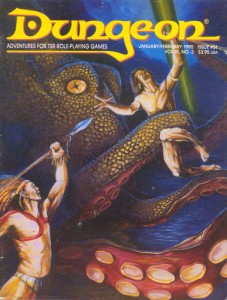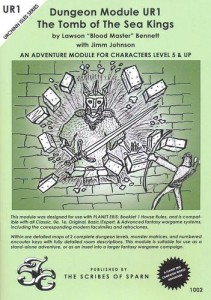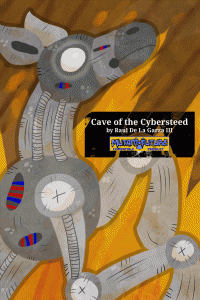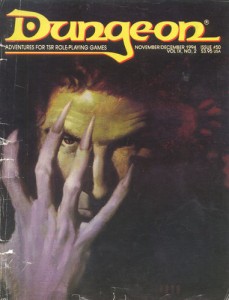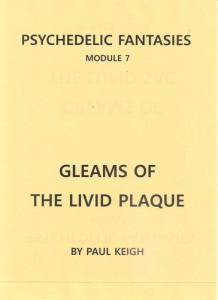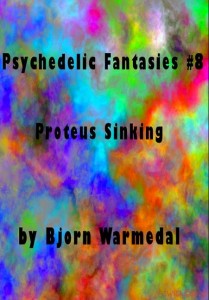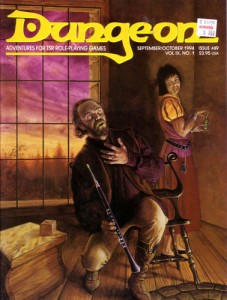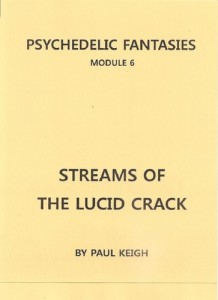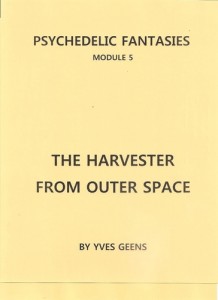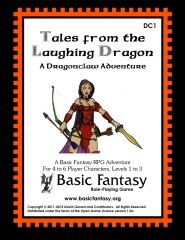
by David Gerard & Contributors
Basic Fantasy
Levels 1-3
Fonkin the beloved gnome sage is missing. The town guard is busy fighting off brigands and doesn’t have time to look for him. A group of aspiring adventurers must take on the task and follow a clue that leads them to an old ruin and footsteps down into the darkness below …
This is a mostly mediocre set of three adventures, with some nicer touches in the second half of the last adventure. It looks like it may been a group effort project. It abstracts the narrative to a degree that makes me uncomfortable, providing exposition instead of gameplay. Most of the product feels more than a little bland and could use some punching up. COmbined with atrocious read-aloud, this is just Yet Another Adventure.
There are three adventures here. The first has the party searching some ruins (Dungeon Level 1) for a missing gnome sage. The second has the party searching Dungeon Level 2 for some items the gnome lost. The third has the party exploring the ground floor and catacombs of a keep, looking for the last item the gnome lost. It is the catacombs level in which things improve, and I’ll cover that separately.
The abstracted narrative is all in the beginning. The read aloud has five paragraphs of text. WAY more than the 2-3 sentences it should have. The second to last paragraph tells you that you spend the evening questioning the villagers and determine that the gnome must be in some nearby ruins. The last paragraph of the read-aloud puts you in front of some stairs in the ruins leading down into the darkness. This is a little too much for me. Someone has made a decision that all that matters is the crawl. The perfunctory hook is ham-handed, by being presented as soliloquy, and the ‘splaining was lame the first time it was used 30 years ago “the guards are busy.” I guess, if I squint very hard, this is all a valid style of play. That’s my liberal “ Do what you will the whole of the law” thing kicking in. But lordy lordy, I would not want to ever be involved in that style of play nor would I ever hope it was someone’s introduction to the hobby.
What it does is Cardinal Sin #1: Fail to inspire the DM to greatness. This trend continues throughout most of the three adventures. Boring guardrooms with boring and mundane descriptions. Describing what “used as a living quarters” looks like, and noting that there is nothing of interest in the room. Why describe it? Do people not know what a bedroom looks like? Do people not know what “being used as living quarters” means? “There is also a small statue of little value in the northwest corner.” Uh … thanks?
Here’s a good one “There is large crudely made mug sitting on the table, It is empty but still contains the dregs of cheap wine at the bottom.” That’s part of the initial room read-aloud. What’s the point? Oh, oh, I’ve got a better one! Room five is the patrol barracks. The read-aloud is six or so sentences long. It tells us that the room has an empty jar that smells faintly of wine. Note also that the DM text says there are two hobgoblins in the room. It’s like the read-aloud has no relation to what’s going on in the room. Overly descriptive and uninspiring at the same time. IE: the usual. Also, it’s a monster party! Orcs, goblins, bandits, hobgoblins, Trogs, bugbears! Never the same monster used twice in twelve rooms. I’m not a hard core ecology guy but stuff like that sticks out even for me. Better to just make them all brigands. The treasure is generally badly described generic stuff “a small statue of bone” and generic. Vampire SPawn stats are noted as being provided in the rear of the adventure … except they are not.
Let’s shift to the good, which is pretty much self-contained in the last adventure and almost all in the second half of the last of the three adventures. A small boy is in the catacombs under the keep you’ve assaulted. His parents have begged you to find him. This has a couple of interesting things going on and points out some missed opportunities.
There’s a nice undead horror aspect alluded to in the catacombs. A message on a tomb wall scrawled in blood. That’s not uncommon, but although the description is not altogether great, it works here. I think it does because of the continuing thread that it runs with. The undead in the catacombs are the boys relatives and they are protecting him. “Protect the boy” in dripping blood and (the implied) viscera works so much better when that theme is continued in several of the rooms and worked into the adventure. The horror aspect is continued with feeding undead, notably some zombies. D&D adventures need more ravenous zombies feeding. Ghouls get all the fun, and the incorporeal get some nice life-force stuff, but they should ALL feed. It allows the DM to invoke all of the “undead feeding” media they’ve ever seen. There’s also a nice bit of treasure of two here, like a gold comb in the shape of a dragonfly. It doesn’t take much, just a bit more, to add a lot of depth.
Let me mention two more things. There’s a necklace the party is given and, hopefully, the party learns that the undead fear/respect it. It marks you as a part of the family The undead attacks stop completely when the boy gets it. Up until that point it’s handled as a Turn Under modifier. I like the concept but not the mechanics. Tacking on the TUrn Undead ability just destroys the wonder of it. ALmost an attempt to describe WHY the undead cower. How about “it’s a family heirloom and they cower from it.” Done! The appeal to mechanics over flavor destroys the wonder of D&D.
Finally, I think there’s a missed opportunity of two in this last section. It’s implied that the undead haunt the bandits in the upper keep. This is in letters, and in finding an undead feeding on a goblin outside of the keep. This could have been beefed up quite a bit with REALLY paranoid brigands, or the keep actively under siege, undead at the last door, etc. That would have really continued and sold the horror theme that this last bit has. FInally, the entracte the catacombs is, I think, a trapdoor under a rug. (I looked several times and either missed it or it’s not there. Tying the levels together was NOT this adventures strong point.) THIS could have used some read-aloud flavor. A gust of cold dark wind, ominous stench, dust blowing out, a moan, something. This is the party ‘crossing over’ to the land of the dead in a horror adventure. They should wet themselves at the door.
So, the last little bit if better than the beginning and beings to provide some of what I’m looking for in an adventure supplement. The rest is forgettable.

